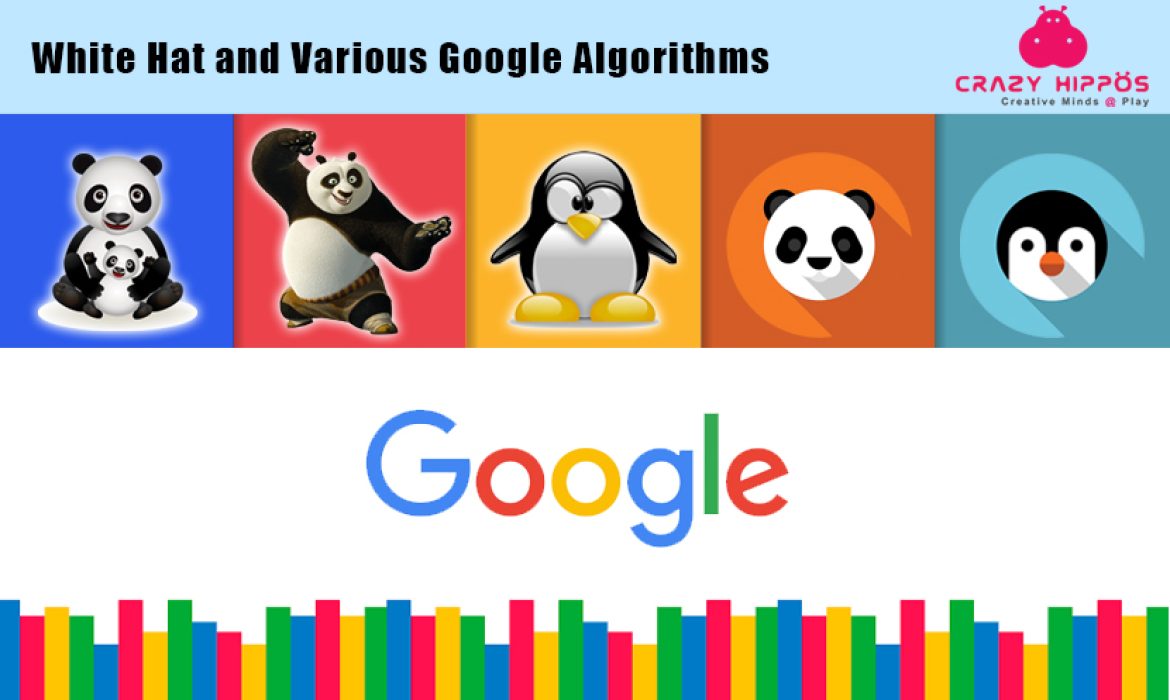THE UNBREAKABLE RELATIONSHIP BETWEEN WHITE HAT AND GOOGLE RULES
What are the Google Rules & Regulations and why are they followed so strictly in White Hat SEO concept?
If you are into SEO and are looking for rules that you must follow in White Hat–continue reading. Here you’ll find a simple and short version of all the rules that you must know in order to have a successful future in white Hat SEO. You must first get yourself thoroughly acquainted with the ins and out of White Hat SEO techniques that will keep your website safe.
Google rules and regulations are also known as “Google Algorithms”. There are some basic rules which you MUST follow in SEO such as
- Content is to be unique (a big no no to plagiarism)
- All your links must be properly connected to a particular category
- Irrelevant Keywords should not be used
- Hidden text or Hidden Link should not be used

Various Google Algorithms:
Alexa Ranking :
- It checks overall website ranking.
- It analysis each and every webpage, the amount of traffic on particular page, and finally generates the overall ranking.
Google HummingBird:
- This is one of the new updates by Google. This algorithm was announced on September 26, 2013.
- This algorithm checks each and every word, every sentence, paragraph and the overall content for plagiarism.
- This algorithms is mainly introduced to provide adequate results for the searches by scanning the content available on millions of web pages. It improves indexing of information and lays down proper results to searches.
PageRank Algorithm:
- This algorithm is mainly used for web pages. It finds the rank of each and every page.
- There is a mathematical formula that accurately calculates the webpage rank.
PageRank is also displayed on the toolbar of your browser if you’ve installed the Google toolbar. But the Toolbar PageRank only goes from 0 – 10 and seems to be something like a logarithmic scale:
| Toolbar PageRank (log base 10) | Real PageRank |
| 0 | 0 – 10 |
| 1 | 100 – 1,000 |
| 2 | 1,000 – 10,000 |
| 3 | 10,000 – 100,000 |
| 4 | and so on |
There is whole different calculation process that you must understand to know how the Google Pagerank Algorithm works. Read in detail about it here.
0 – 10 — This is the ranking position which is called pagerank
Here, 0 is the Low ranking.
For example: if your website is newly developed then your page rank will be “ 0 position ”.
10 is the High Ranking.
For example: If your website has a good domain age and your website is designed using the accurate method and engaging content then Google will bestow it with good ranking i.e., from “1 – 10 position”.
Google Panda:
Google Panda is a new version of Google’s search results ranking algorithm, introduced in 2011. This change lowers the rank of “low-quality sites” or “thin sites”, in particular “content farms”, and return higher-quality sites near the top of the search results.
Quickies —
- Google Panda launched on February, 2011.
- There is 28 updates between 2011 to 2015 for Google Panda.
- Separate low-quality and high-quality pages present in website
How Google Panda calculates your website?
- Thin content indicates that the content is not enough for that page or is extremely general content.
- It checks for duplicate content
- It checks if the website has minimal content and maximum images. Also analyses the safety structures of such websites
- Checks if the ad-content present in website is very high.
- Content is swamped with unwanted links or other websites’ link.
- Users are usually warned to visit that website or users might have banned that website.
- Content is not exactly matching or mismatching when visitors search by using search query.
Google Penguin:
Quickies to understand penguin
- This Google Penguin Algorithm was officially released on April 24, 2012.
- It was mainly created for checking unwanted links & keyword stuffing in websites
- It analyzes unwanted URL, Spam content and Spam links.
- Banns the websites that use Black Hat techniques.
- It immediately takes action against websites using Black Hat by decreasing their ranking
Google Penalty: A website will be banned from the Google if it is found to be using Black Hat techniques. The ultimate ban or penalization is known as Google Penalty.
Knowledge Graph: This algorithm focuses on SESR (Search Engine Search Results). It brings the visitors to the website by scanning their keyword among the website content using SESR.
Visual Ranking: This focuses on analyzing images. .It is an algorithm for finding and ranking images by analysing and comparing their content, rather than searching image names.
HillTop Ranking: Finding the documents that are available in the website, be it relevant to that search topic or not, is called HillTop Ranking Algorithm.
Trust Ranking: Analyzing the links which is present in your website and checking if they are connected properly with relevant content.
HITS Algorithm:
Quickies to understand —
- HITS (Hyperlink Induced Topic Search).
- HITS also known as “hubsend authorities”.
- Hubsend – Estimates the value of the links in page present in the website.
- Authorities – Estimates the value of the content of page that are present in the website.
Google Pigeon:
It is updated on July 24, 2014. This is mainly for local listing of the websites in search engine.
Google is visited by billions of people everyday. Don’t indulge in activities that may cause some serious damage to your web reputation. Follow these rules, know about algorithms and continue working with only White Hat Techniques.
Looking for a reliable SEO Agency in Chennai ?
We, at Crazy Hippos, have in-house SEO experts, content strategists, developers and writers who will maximise your business reach through ONLY White Hat strategies that work the best for your company.




